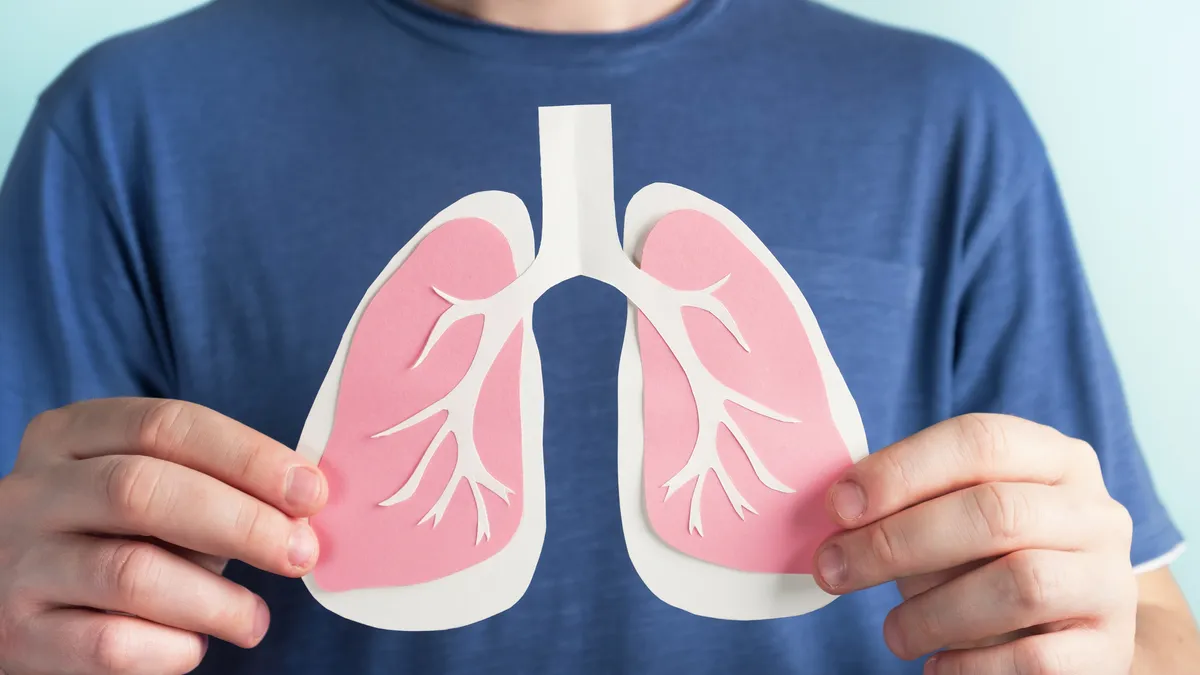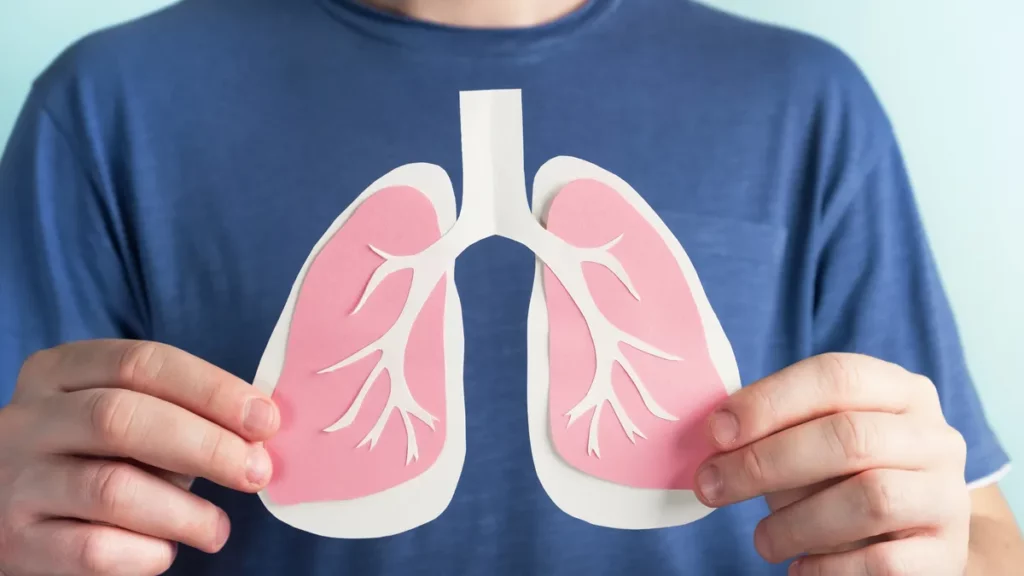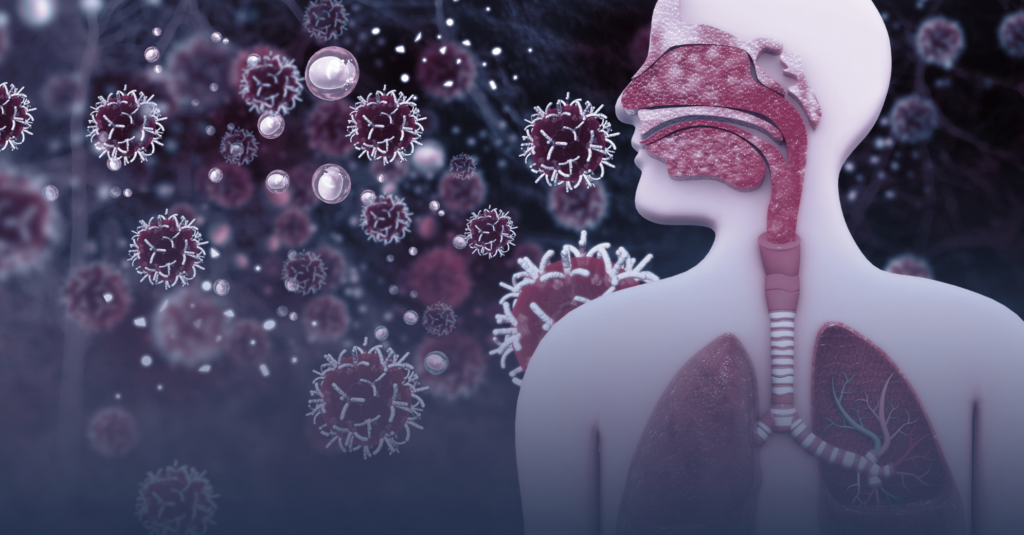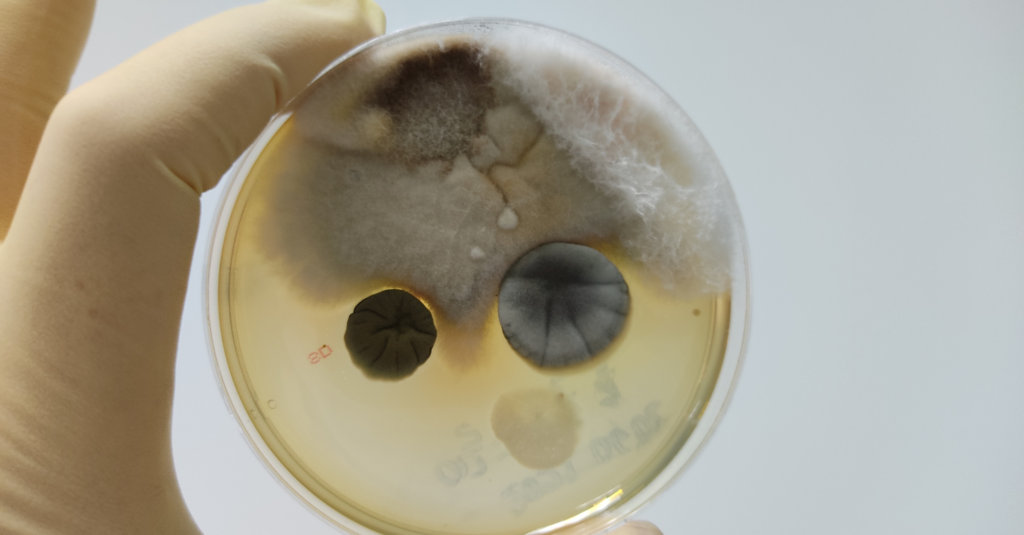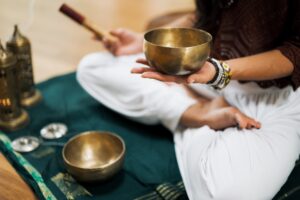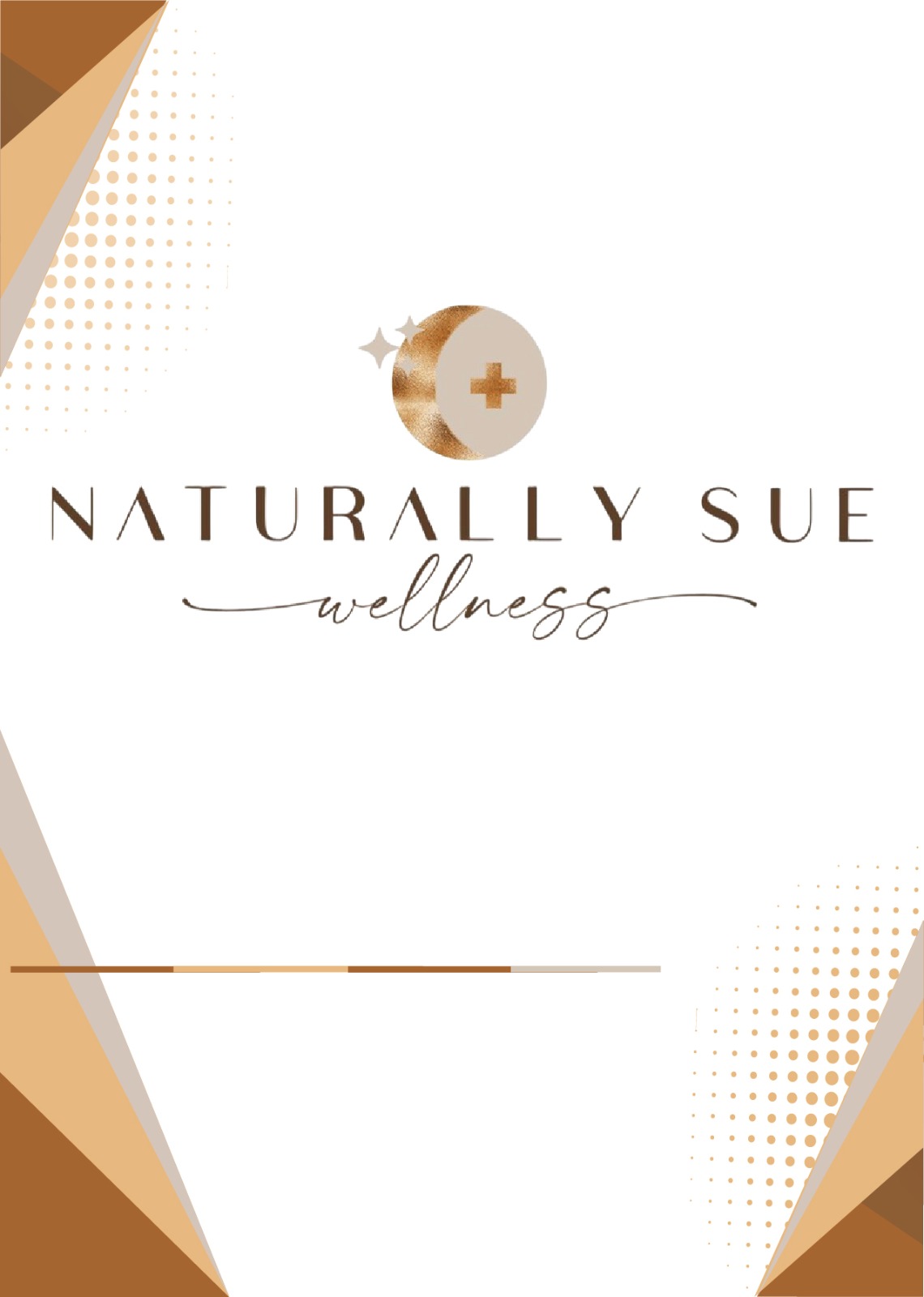The Connection Between Mold Exposure and Respiratory Health
Mold exposure can significantly impact respiratory health. Mold can trigger allergic reactions, like itchy, watery eyes and coughing. For many, it can cause inflammation of the airways and lungs, causing more serious respiratory issues. There is a strong link between mold exposure and respiratory health issues, as asthma. Those with asthma or other respiratory or pulmonary conditions are at risk for severe illness.
According to the CDC, recent studies suggest that exposure to mold spores and mycotoxins during childhood can lead to the development of asthma as they age, and make existing asthma worse.
Natural remedies for mold exposure support recovery from mold-related illness through holistic methods. Naturopathic treatments offer safe and effective therapies for healing from mold toxicity, such as reducing inflammation, lung detox, and more.
How Mold Exposure Affects the Respiratory System
Mold exposure affects the respiratory system when mold spores are inhaled. Inhalation of mold spores can irritate and inflame the lungs and airways, causing symptoms, such as coughing, wheezing, and sore throat.
When mold spores are dispersed, they can release poisonous substances called mycotoxins. Mycotoxins are a health hazard, as they can cause inflammation and oxidative damage throughout the body, including:
- Respiratory system
- Circulating blood
- Digestive tract
- Liver
- Kidneys
- Nervous system
- Immune system
Mold contaminants cause injury to the respiratory pathways by impairing the immune system, causing whole-body inflammation, and damaging mucosal linings of the airways and nasal passages. Because of these disruptions, an individual exposed to mold for a long time has a higher risk for respiratory infection and long-lasting effects.
Common Respiratory Symptoms
Common respiratory symptoms caused by mold include:
- Coughing
- Wheezing
- Shortness of breath
- Chest tightness
- Nasal congestion
- Chronic sinus infections
- Sore Throat
- Itchy, red, watery eyes
- Headache
- Fatigue
- Cognitive issues (brain fog, memory issues, etc)
Mold exposure can trigger allergic reactions and asthma flare-ups. It can also cause lung infections, especially for people with compromised immune systems or chronic lung disease.
Long-Term Effects
Prolonged exposure to mold can impact your lung function and may cause chronic health problems, such as:
- Development of asthma
- Hypersensitivity pneumonitis (inflammatory lung disease)
- Chronic bronchitis
- Chronic fatigue
- Autoimmune conditions
- Pulmonary Fibrosis
If you suspect you have been exposed to mold, talk with a mold-literate healthcare provider for an evaluation and treatment.
Diagnosing Mold-Related Respiratory Issues
A natural approach to diagnosing mold-related illness and exposure is comprehensive. It includes investigating symptoms, and lab testing. It also includes environmental testing to identify and eliminate the root cause and prevent reinfection.
At-Home Environmental Testing
Several types of home-based environmental testing kits are available to test for possible mold spores:
- Surface testing
- Air Testing
- Air monitoring
Air Testing: usually involves a petri dish that contains a type of gel used to grow microorganisms, like mold and bacteria. If colonies grow in the gel, you send the dish away to be analyzed to assess what type of mold is growing.
Surface Testing: to test for mold spores in the air that land on furniture and rugs, test kits involve collecting samples using swabs, tape lifts, or a box that collects and traps samples between. Samples are then sent to a lab for analysis, where they identify the type and concentration of mold spores present, providing a detailed report on the findings
Air Monitoring: Mold in the air can be measured using mold testing sensors. Use the device in the kit to pull a known amount of air through it. A monitoring device collects mold spores by pulling air through it (like a fan, or suction) onto a slide or petri dish, which is then analyzed by a lab.
Home-based mold testing kits are limited in the type of information they provide, and may not give complete and conclusive information. A professional evaluation can be essential for interpreting and helping decide the best, next steps. If you hire a professional make sure that they are prepared to do an ERMI test.
Medical Testing
As part of a comprehensive approach to diagnosing mold exposure, naturopathic doctors utilize a variety of medical tests to identify mold exposure and mold-related illness, including:
- Mycotoxin testing (via urine)
- Blood tests for antibodies or biomarkers to look for immune response, inflammation, or organ function affected by mold
- Visual contrast sensitivity test
- Mold allergy testing
- Food allergy testing
- Nutrient deficiencies that may be contributing to symptoms
- Chronic infections, like Lyme disease, Epstein-Barr virus or other viral reactivations
Evaluation of Symptoms
As we explore your symptoms, we may also discuss your health history, A full evaluation will include:
- Details about how your symptoms have been impacting daily life
- History of allergies, asthma, or other respiratory conditions
- History of past diseases or infections that may have similar symptoms, such as Lyme, chronic fatigue, or other conditions
- Current or past medications and treatments
- Assessment of current diet and lifestyle
When to Seek Help
If you suspect mold-related illness or mold toxicity, consult with a mold-literate health professional as soon as possible. Signs requiring immediate medical evaluation may include:
- Severe shortness of breath
- Wheezing
- Frequent asthma or allergic “attacks”
- Considerable congestion, coughing, stuffy nose
Any symptoms that are bothersome or disrupt your ability to function are a reason to see medical attention. A healthcare professional with expertise in treating mold can help rule out other potential causes of your symptoms. They can also help identify and eliminate the source for good, which will prevent reinfection.
Natural Remedies to Support Respiratory Health After Mold Exposure
Natural remedies to support respiratory health due to mold exposure focus on mold detox and rehabilitating lung health through a variety of natural therapies, like herbs and breathwork. Appropriate treatments will depend on the results of your health evaluation, lab tests, and the extent of mold exposure.
Detoxification Techniques
Following a low-mold, whole-foods diet is a simple way to help with detox efforts and ensure you are getting key nutrients to manage mold exposure symptoms, A mold-detox diet should include:
- Lots of colorful, antioxidant-rich fruits, vegetables, and leafy greens to help detoxify the liver and reduce inflammation
- Good quality lean meats and fish for the Omega-3 fatty acids
- Fiber is important to help bind to the mycotoxins and eliminate them through waste. Seeds are especially useful binders.
- Hydration is important for flushing out toxins
- Anti-inflammatory herbs and spices like turmeric, garlic, and ginger.
Nutritional supplementation and binders are commonly used to support detoxification and lung function after mold toxicity. Common supplements and binders used in naturopathic medicine include:
- Liposomal glutathione aids in the detox of mold toxins from the body and an antioxidant
- Vitamin C is a powerful antioxidant that reduces oxidative stress
- NAC (N-acetyl cysteine), a precursor to glutathione, supports detox
- Quercetin, an anti-inflammatory and histamine reducer through mast cell stabilization
- Omega-3 fatty acids reduce inflammation
- Bioflavonoids, the compounds in fruits and vegetables that give them color, help rejuvenate and protect cells and tissue affected by mycotoxins and can aid in the elimination of mycotoxins
- Dietary fiber acts as a natural binder to eliminate toxins through human waste
- Vitamin D boosts the immune response
- Vitamin E is a powerful antioxidant that helps neutralize free radical damage in the body
Binders help remove toxins from your body, and some can deplete minerals. It is best to use with caution and never with children unless doctor-supervised. Common binders used by mold doctors to help with detox are:
- Activated charcoal
- Bentonite clay
- Chlorella
Herbal Remedies for Lung Health
Herbs that are commonly used to support lung health after mold exposure include:
- Mullein reduces inflammation, eases spasms and chest tightness, soothes irritated airways and calms coughs
- Oregano oil acts as a natural antifungal and antimicrobial
- Licorice root supports mucus clearance and reduces coughing, but can increase blood pressure
- Eucalyptus oil opens airways and acts as a decongestant
- Peppermint can soothe the respiratory tract and open the airways
- Lungwort reduces irritation and soothes the airways. It can also repair free radical damage to cells
- Holy Basil is an antifungal
- Pau D’Arco is an antifungal
- Neem is an antifungal
- Olive Leaf is an antifungal
The lungs are self-cleaning organs. They can begin to heal themselves once exposure to pollutants like mold stops. That is why removing mold from your environment is crucial.
Essential Oils and Aromatherapy
The use of essential oils through aromatherapy can offer respiratory relief from spores that live in the respiratory system after mold exposure. Essential oil has a wide variety of benefits, including having natural antimicrobial properties, antiseptic properties, and calming and soothing properties. Studies show that these beneficial properties can help alleviate congestion and support respiratory health.
Common essential oils used in natural medicine to promote respiratory health after mold exposure include:
- Tea tree oil (melaleuca) – has antibacterial and antiseptic properties that may help prevent and treat respiratory issues
- Peppermint oil – soothing, reduces nasal congestion and bronchial restriction
- Lavender oil – has antibacterial properties, reduces asthma, decreases inflammation of mucus in the respiratory system
- Frankincense – helps reduce asthma and inflammation, and can stimulate the immune system
- Eucalyptus – soothing, opens up nasal passages, and helps with congestion and bronchial restriction
- Rosemary – calms asthma and calms the muscles in your trachea
- Thyme – antioxidant and antimicrobial properties and supports the immune system
- Oregano – Can loosen mucus buildup in your sinuses and respiratory tracts
Aromatherapy with essential oils can be utilized in various ways, such as:
- Diffuser, for inhalation to clear airways
- Neti pot, for nasal irrigation
- Steam therapy, to clear airways and nasal passages
Breathing Therapies and Lung Rehabilitation
Lung capacity should return on its own after mold exposure. However, breathing exercises can help rehabilitate the lungs and detox the lungs after mold exposure more effectively.
Breathwork
Deep diaphragmatic breathing (belly breathing) is the most commonly recommended technique to support lung health. Diaphragmatic breathing fully utilizes the lungs and can assist in clearing irritants from the airways. It also reduces blood pressure and improves relaxation, which also aids in the healing process.
Belly breathing can be done by inhaling slowly through the nose, allowing your belly to expand, and exhaling slowly through the mouth. Try to make the exhale longer than the inhale.
Halotherapy
Halotherapy is another breathing therapy that can help restore lung capacity after mold exposure. Halotherapy involves inhaling salty air to improve respiratory health. This is often done in salt rooms or salt caves or at the beach. The salt particles have been shown to help reduce inflammation and clear mucus from the airways. It is also known for promoting relaxation and reducing stress.
Lifestyle Changes for Long-Term Respiratory Health
Lifestyle changes can help maintain long-term respiratory health after mold exposure. Addressing the indoor air quality of your home (or office) is crucial to preventing reinfection. Diet and adequate hydration will improve immunity and detoxification, and exercise will help strengthen the diaphragm and lung capacity.
Improve Indoor Air Quality
- Mold remediation to clean up existing mold
- Regular cleaning
- Proper ventilation. Open windows, use high efficiency (HEPA) filters, dehumidifiers and use fans to circulate airflow.
- Manage humidity levels. Keep humidity below 50% to prevent mold regrowth. Use dehumidifiers
Dietary Considerations
- Stay properly hydrated. Drink filtered water to flush out toxins
- Eat quality fruits and vegetables and ample amounts of fiber
- Consume immune-boosting lean protein and omega-3 fatty acids
- Consider minimizing moldy foods, such as grains, legumes, peanuts, and sugars
Exercise and Outdoor Air Exposure
- Engage in aerobic activities, such as walking, swimming, cycling, or other cardio efforts to improve lung capacity
- Support the body’s detox system by regularly sweating through exercise and saunas
- Breathing fresh outdoor air can improve lung health by increasing oxygen exposure and reducing inflammation
When to Seek Professional Help
Warning signs that warrant immediate medical attention include:
- Severe shortness of breath
- Wheezing
- Persistent coughing
- Chest tightness
- Frequent asthma or allergic “attacks”
- If symptoms don’t improve despite treatment
Any symptoms that are bothersome or disrupt your ability to function are a reason to see medical attention. A healthcare professional with expertise in treating mold can help rule out other potential causes of your symptoms. They can also help identify and eliminate the source for good, which will prevent reinfection.
If you suspect mold-related illness or mold toxicity, consult with a mold-literate, naturopathic health professional for personalized detox plans and mycotoxin testing.
FAQs About Mold Exposure and Respiratory Health
What are the best herbs for lung detox after mold exposure?
The best herbs for lung detox after mold exposure include:
- Garlic
- Thyme
- Holy Basil
- Pau D’Arco
- Neem
- Olive Leaf
- Oil of Oregano
Can mold exposure cause asthma?
Yes, Mold exposure is a major contributor to the development of asthma. It can also worsen current asthma conditions.
How long does it take to recover from mold-related lung damage?
The time it takes to recover from mold-related lung damage depends on the severity of exposure and the individual’s health. Symptoms may improve within a few days of starting natural treatments. It could take longer – a few weeks to months if your exposure was severe or prolonged. Naturopathic treatments for mold exposure are effective, quick, and long-lasting.
Are essential oils effective for clearing mold spores from the lungs?
Yes. Essential oils are effective for detoxing mold spores from the lungs. According to NIH, a variety of essential oils have powerful antifungal properties that are effective at helping detox and recovery from mold-related illness. Research also supports their efficacy in clearing mold spores from the environment.
What foods help detox mold toxins naturally?
The best foods that help your body detox from mold naturally include leafy greens, colorful vegetables and low-glycemic fruits, grass-fed meats, wild-caught fish, and foods rich in Omega-3 fatty acids. Foods higher in sulfur, like eggs, broccoli cauliflower, kale, cabbage, and Brussels sprouts can help to detox an overburdened liver due to mold toxins. In a small number of people with certain types of mycotoxin illness, these foods can make matters worse.
Conclusion: Supporting Respiratory Health Naturally After Mold Exposure
Natural remedies offer a long-term solution to respiratory health after mold exposure by supporting the individual needs of the patient for a full recovery. A naturopathic approach to treatment aids in lung recovery by helping reduce inflammation and rebalance and strengthen the body’s immune response.
The first step for supporting respiratory health naturally after mold exposure is to eliminate the source of the mold for good. This will prevent recurring illness and allow long-term healing.
Natural treatments support overall lung health and mold detoxification through methods like:
- Herbal therapies
- Dietary changes
- Hydration
- Breathwork
- Aromatherapy
- Exercise
The doctors at Naturally Sue Wellness are mold-literate professionals. With our expertise, patients recover from toxic mold illness in the long term. Our patients benefit from our years of experience and recommendations of top-notch mold professionals.
Contact us for your personalized plan on our and start healing now.



